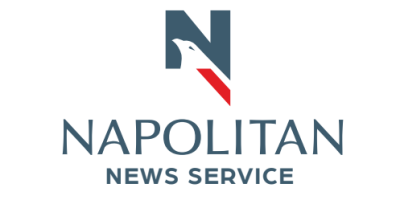Written by Scott Rasmussen
In May of 1979, long before I became a pollster, I learned a lesson that has proven invaluable throughout my polling career.
My father and I were summoned to a meeting at Getty Oil. They had already invested $5 million in our crazy idea for an all-sports network and had to decide if they would continue to fund it. We sat on the inside of a boomeranged shape table while Getty officials and lawyers asked questions from all sides.
Since I had done all the projections, someone asked me to justify the projections for 1988. It was a bit absurd to ask about projections nine years into the future for a startup in an industry that didn’t exist. But, as a numbers geek, I proceeded to give an answer that was numerically precise and utterly worthless (probably sounded like a lot of young Congressional staffers).
I said there were 12 million cable households in the U.S., AND IF cable grew at such and such a rate, AND IF a certain percentage of those cable systems signed up for satellite programming, AND IF a different percentage of that percentage carried our network and so on and so on things would be great. I piled credible (but uncertain) assumption upon assumption and proudly declared the answer.
Sid Peterson, the brand new CEO of Getty, was sitting right across from me and had finally heard enough. He pointed out that I didn’t know what the revenue would be in 1988 any more than they did. Instead of focusing on the math, he said they needed to evaluate the fundamental assumptions. Would the cable industry really grow that fast? Would the industry embrace satellite programming in general and our network in particular? Would people watch an all-sports network? And, most important of all, would advertisers sponsor what in those days we called “narrowcasting”?
Peterson said that if the fundamental assumptions proved out, they would make a lot of money. If not, he said it would be like a dry hole in the oil industry.
Throughout my career, I’ve tried to keep that perspective in mind. Focus on the fundamentals. In a presidential year, the president’s job approval rating sets the stage. James Carville’s reminder that
“it’s the economy, stupid” highlights another fundamental. We look at the way people feel about their own personal finances as the best economic indicator. Those fundamentals set the baseline and other issues have impact only on the margins.
Applying that logic to 2024, the Republicans have the edge on the fundamentals. President Biden’s approval rating is low and people are pessimistic about their finances (25% say their finances are getting better while 41% say worse). Normally, that would suggest a solid victory for the GOP.
So, what’s keeping the election close? There’s one more piece of the fundamentals puzzle. Republicans nominated a candidate who has what some people politely call baggage. Ultimately, this election may be decided by which is more powerful—the GOP edge on fundamentals or the baggage of the GOP candidate.
But there’s another lesson to be learned from that long ago encounter with Getty Oil — piling assumption upon assumption can provide answers that sound more precise than they deserve. We are now in the final countdown of the election cycle. Countless polls have been released, exit polling is on the horizon, and election day forecasters are attempting to mystically divine whether the odds of one candidate winning have or will change. Fans from both teams look at the same data and are convinced it means their team is going to win. Oh, and any poll that challenges that belief is dismissed as unreliable.
When an election forecast says there’s a 56% chance that your candidate is going to win, it falsely implies a level of mathematical certainty that is unwarranted. A more accurate description of the forecast would be to say that there’s a 56% chance of that happening IF the polls are exactly right, AND IF they’ve been averaged the right way by the forecaster, AND IF the forecaster’s assessment of underlying fundamentals are correct, AND IF nothing changes, AND IF there are no weather disturbances to impact turnout, etc. In other words, the 56% estimate is meaningless because the assumptions used to come up with it are uncertain at best.
This guidance is for the small portion of politically obsessed Americans who will spend the next 48 hours trying to figure out precisely who will win and by how much. The truth is, nobody will know until the final votes are counted. These political junkies should remember that most Americans just want it to end. No more assumptions, no more guessing, and no more demonizing the other team. Regardless of who wins, they will keep their head down, keep working hard, and keep doing whatever it takes to keep their families safe.
By the way, in May of 1979, many in the room were skeptical of my projection that ESPN alone would be in 30 million households by the end of the 80s. That seemed a little aggressive at a time when only 12 million households even had cable.
The skeptics were right that my numbers were way off. But Peterson’s focus on the fundamentals proved more reliable. Rather than the 30 million households I so precisely projected, ESPN was approaching 60 million households by the end of the 80s.
Scott Rasmussen is the president of RMG Research, Inc. and founder of the Napolitan Institute.

